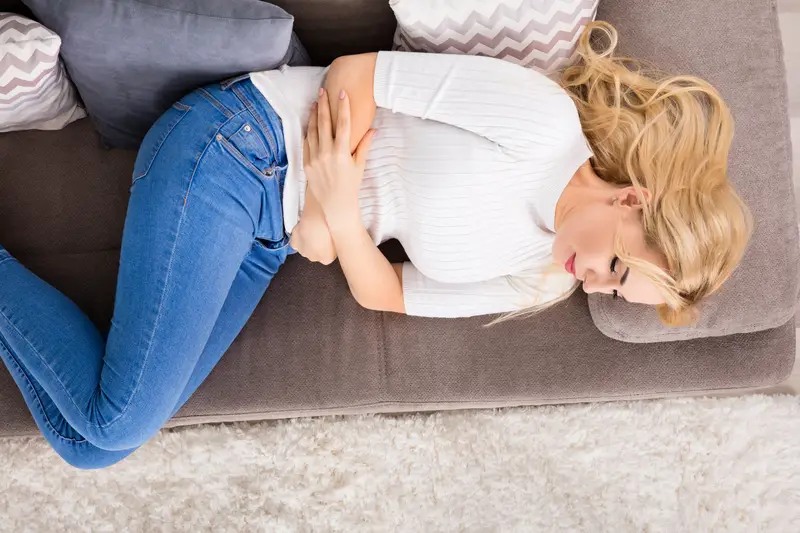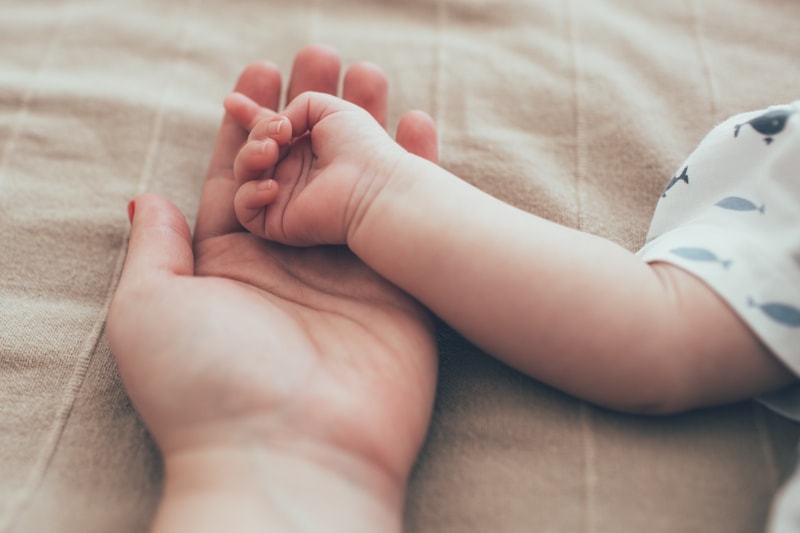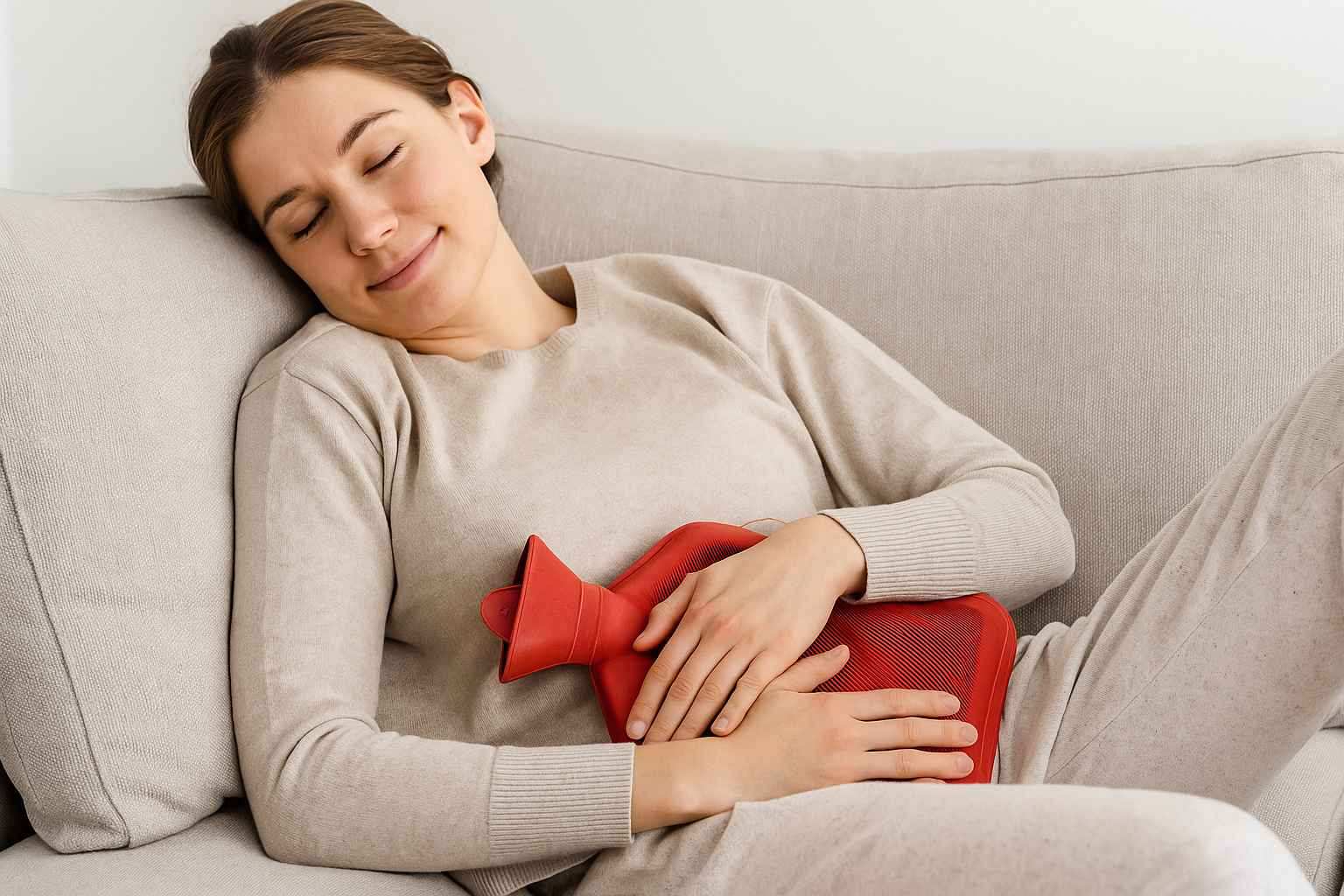Dementia is a generic term for cognitive decline that is severe enough to impair daily activities, including language, memory, problem-solving, and mental capacities. Previous studies show that behavioral and psychological symptoms of dementia (BPSD) affect 60% to 80% of patients with dementia.
Dementia is caused by damage to or loss of nerve cells and their connections in the brain. Its symptoms include cognitive and behavioral abnormalities. Acupressure for dementia can treat dementia by tonifying the blood and qi, strengthening the kidney core, creating marrow to nourish the brain, and eliminating toxins and blood stasis from the body.
What Is Dementia?
Dementia is the loss of cognitive functioning, like reasoning, remembering, and understanding, to the point where it interferes with daily living and activities. It is possible for people with dementia to develop agitated behavior and different personalities and lose the ability to control their emotions. Dementia can range in intensity from the earliest stages, when it is only beginning to impair a person’s competence, to the most advanced stages, when the individual is wholly dependent on others to perform even the most basic tasks.
Depending on the type, a person’s symptoms of dementia may differ. The condition known as Alzheimer’s disease is the most common type of dementia. The second most frequent type of dementia is vascular dementia, which develops when blood vessels in the brain get blocked, and a tiny hemorrhage takes place.
Mixed dementia refers to patients with dementia who simultaneously exhibit brain abnormalities associated with several different kinds of dementia. Other health issues, some of which are treatable, such as thyroid issues and vitamin deficiencies, can also contribute to the symptoms of dementia.
What Is The Cause Of Dementia?

The root cause of dementia is brain cell damage. As a result of damage to the brain cell, the communication between brain cells is disrupted.
There are numerous separate areas in the brain, and each performs a particular job (for instance, judgment, memory, and movement). Damaged cells in a certain area prevent that area from completing their activities normally.
The hub of memory and learning, which is located in the part of the brain known as the hippocampus, is frequently the area of the brain that experiences damage first. For this reason, memory loss is one of the early psychological symptoms of dementia. Although the majority of the brain disorders that lead to dementia are irreversible and deteriorate over time, reasoning and memory problems brought on by the following diseases may get better with treatment or attention:
- Depression
- Adverse effects of medication
- Excessive alcohol use
- Thyroid conditions
- Nutritional deficits
Can Acupuncture Help With Dementia?

With 137 randomized controlled trials and 9012 people overall, 13 systematic reviews with meta-analyses satisfied the research to know if acupuncture and dementia work hand in hand. The findings indicated that acupressure for dementia might successfully treat people with dementia for 4–24 weeks while also having positive benefits on cognitive function and daily living activities; however, there was a significant variation.
A subgroup study revealed that acupuncture worked better to treat Vascular Dementia than Alzheimer’s Dementia. Additional studies also showed that single acupuncture for dementia patients outperformed combined procedures and that the efficacy of acupuncture was noticeably more significant than pharmacological therapies. One outcome measure gave the reports a “high” rating, five gave them a “moderate” rating, and seven gave them a “poor” rating. Only one systematic review had “poor” methodological quality, while the others had “extremely low” methodological quality.
To examine the relationship between the dementia risk in individuals with depression and acupuncture treatment, The Taiwanese National Health Insurance Research Database was used to select patients over the age of 18 who were newly diagnosed with depression between 1997 and 2010. These patients were followed up until the end of 2013. Patients who got acupuncture had a lower risk of dementia than the non-acupuncture population.
In the acupuncture group, compared to the non-acupuncture cohort, the prevalence rate of dementia was considerably lower. The pilot study, which used real-world data, found that acupuncture decreased the incidence of dementia in depressed individuals, which is consistent with clinical practice healthcare decisions. This shows clearly that acupuncture for dementia works well.
What Are The Acupressure Points For Dementia?
The majority of the acupressure points for dementia are located along meridians that are either directly or indirectly associated with the brain. It includes the Governing Vessel, Bladder, Spleen, Stomach, and Kidney Meridians.
Acupoint: GV-20 (Other Names: The Governing Vessel-20/Bai Hui/Hundred Convergence)
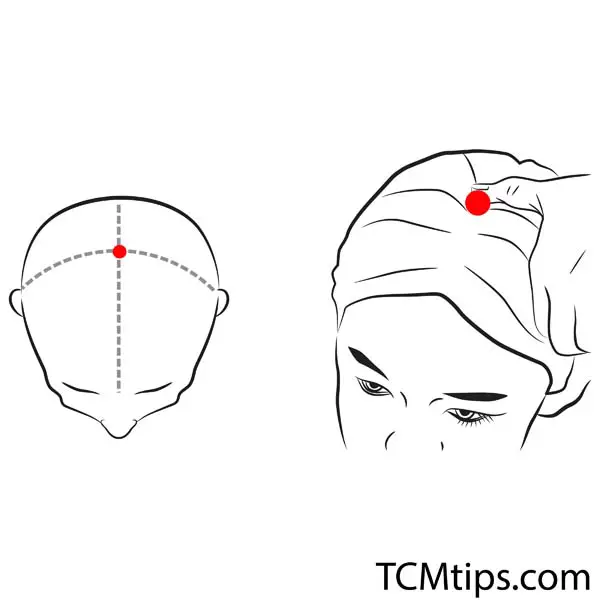
One of the most significant Government Vessel acupoints and acupressure points for brain fog is Baihui (GV20). It is frequently utilized in neurology, psychiatry and as a distal point for anorectal problems by general practitioners. The primary therapeutic benefits of GV20, according to previous studies, often include the treatment of headaches, stroke, vertigo, and anxiety. It is located where all of the yang meridians converge, on the highest point of the skull. A straight line drawn up from both ears will lead you to it. Applying pressure to the GV-20, one of the acupressure points for neck pain and headaches, might provide immediate relief.
Acupoint: GV-24 (Other Names: The Governing Vessel-24/Shen Ting/Spirit Courtyard)
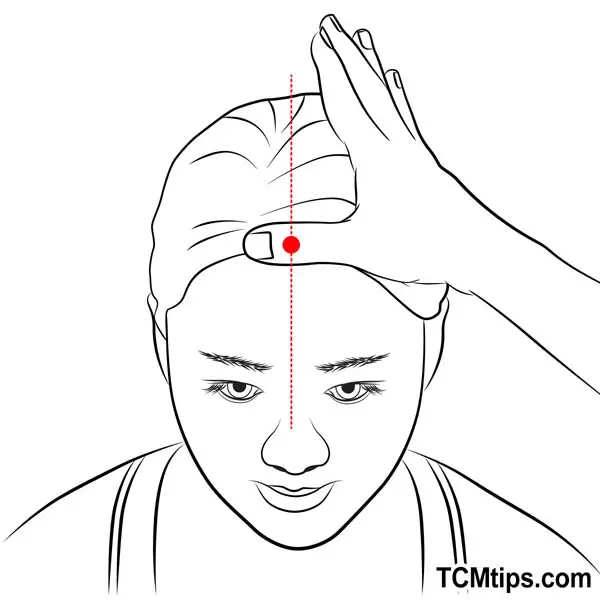
The GV-24 is located where the bridge of your nose meets the middle of your forehead, directly between your brows. It eases symptoms of frontal headaches, chronic headaches, anxiety, palpitations, sleeplessness, vertigo, clogged sinuses, and memory loss. Additionally, the effectiveness of acupressure can help to stimulate the pituitary gland, the body’s major endocrine gland, to improve the state of the skin everywhere.
The Shen Ting is one of the acupressure points for hair growth and may undoubtedly enhance post-stroke cognitive impairment for patients with dementia. According to a clinical trial, when paired with primary therapy and regular rehabilitation, the impact is better than only traditional rehabilitation.
Acupoint: GV-17 (Other Names: The Governing Vessel-17/Nao Hu/Brain Door)
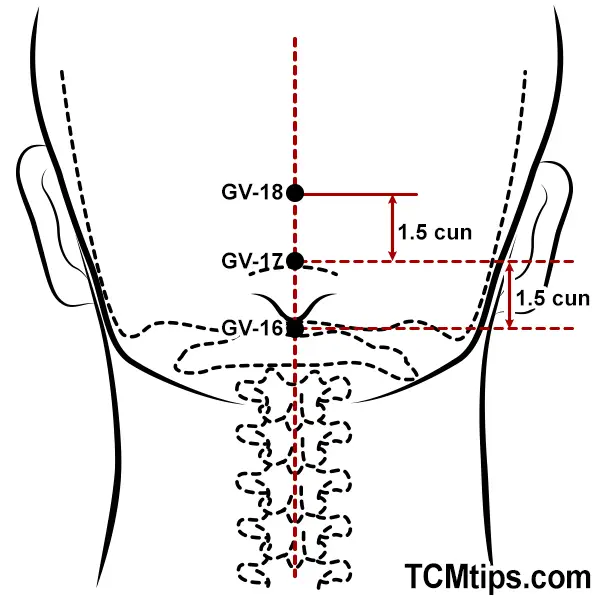
The Nao Hu Acupuncture Point is located in GV 17. Governor Vessel (Dumai) enters the brain and ascends down the spine. This location functions as a doorway for the meridian’s Qi to enter the occipital area of the brain. It extends from the spinal column’s base up to the head. The GV-17 is in charge of controlling the qi flow in all of the body’s Yang meridians. It can aid in the cure of epilepsy, dizziness, headache, neck discomfort, and stiffness.
Acupoint: Bl-10 (Other Names: Urinary Bladder-10/Tian Zhu/Celestial Pillar)
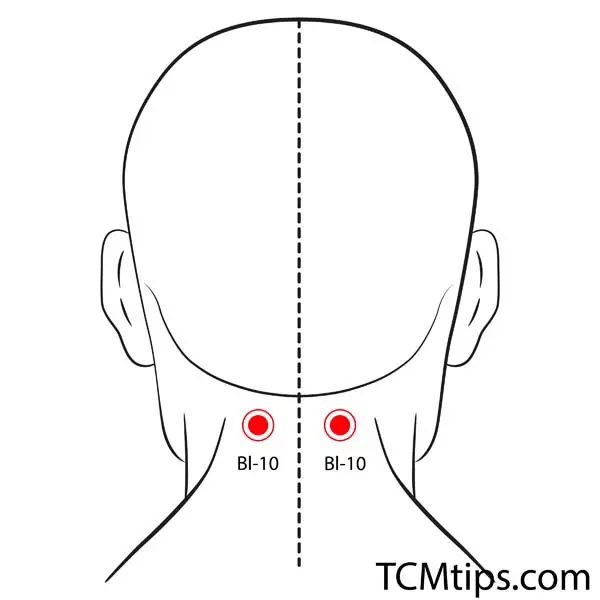

The BL-10 is located outside the trapezius muscle on the neck, 1.3 cun from the midline, and 5 cun (a cun is the width of the tip of your thumb) below the hollow beneath the occipital protuberance.
This acupressure treatment can assist adults with dementia with throat swelling, trouble speaking, discomfort and heaviness in the head, neck stiffness, and back and chronic pain. A clinical trial showed that simulation here could aid people with dementia with eye discomfort, redness, and impaired vision, making it one of the acupressure points for cataracts. The success of this treatment so far has shown that acupuncture improves dementia.
Acupoint: SP-10 (Other Names: Spleen Meridian-10/Xue Hai/Sea of Blood)
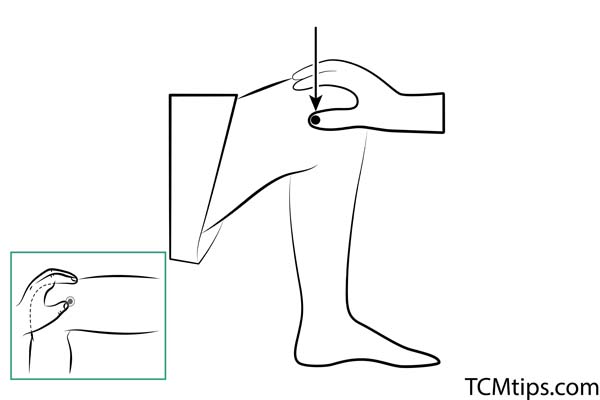
The SP-10 is located on the medial quadriceps femoris muscle bulge, 2 cun anterior to the knee and above the media superior patellar line. The index finger will strike a sensitive spot in the fleshy muscle if one rests the palm on the kneecap.
Simulating the Xuehai can help to minimize the effect of circulatory disorders like cerebral infarction and cerebral hemorrhage. Acupressure for dementia in this region can also assist with menstrual irregularities, urticaria, uterine hemorrhage, and erysipelas. Additionally, it aids in removing blood stasis and cooling the blood. A clinical trial revealed that the Xuehai could help with soreness in the knee, making it one of the acupressure for knee inflammation.
Acupoint: ST-40 (Other Names: Stomach Meridian-40/Feng Long/Abundant Bulge)
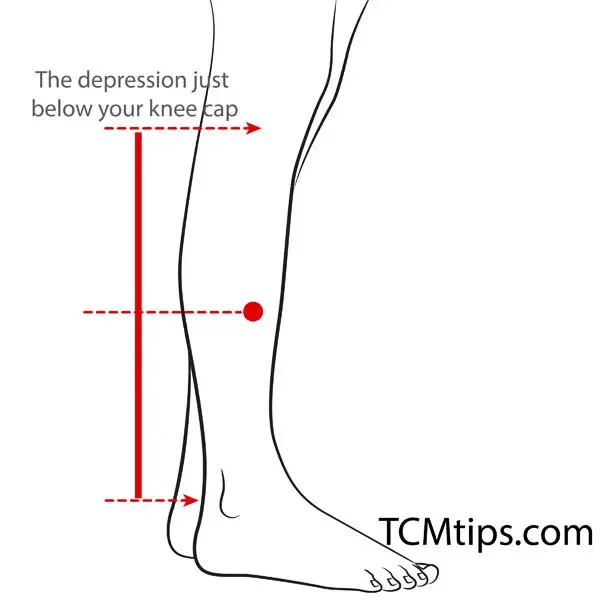
The Fenglong is located on the front of the lower leg, two fingerbreadths (middle finger) from the anterior crest of the tibia, and 8 cun posterior to the external midline lateral to ST 38. It helps put an end to coughing and wheezing, relaxes and clears mucus from the heart, stimulates the meridian, alleviates chronic pain, and soothes and clears the mind and heart, and asthma.
Simulating the Fenglong helps to improve the flow of blood and stop irrational behavior. Simulating the ST-40 will reduce the adverse effects of dementia where the usual care cannot work. It also opens the chest and helps with eye infections, making it one of the acupressure points for eye infections.
A pilot study found compelling evidence that acupuncture for vascular dementia works fine and may partially identify the underlying mechanisms that lead to the behavior in the first place.
Acupoint: KI-3 (Other Names: Kidney Meridian-3/Tai Xi/Great Stream)
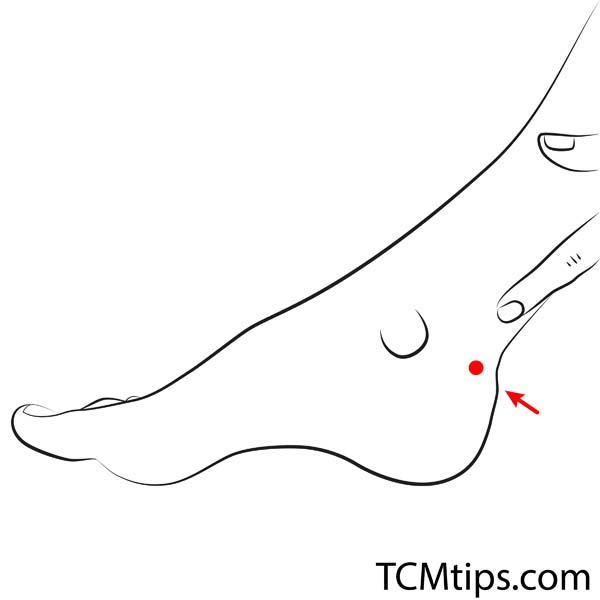
The root spot for the kidney energy system, Kidney 3 (KI3), is considered one of the most significant acupressure points in the body. It may be used to treat kidney yin, yang, and qi deficiencies. It is located on the medial side of the foot, with the medial side in a dip posterior to the tip of the inner ankle bone and close to the Achilles tendon.
The KI-3 is excellent acupuncture for peroneal tendonitis. It is also excellent for stroke and problems that may arise from cognitive dysfunction. Simulating the Taixi has proven over time to be multi-useful, as it can be used to treat kidney and dementia effectively.
Conclusion
- Anxiety and headache are major causes of dementia. Simulating the GV-20 can help to reduce the effect of anxiety and headache. Acupressure of this dementia point can also help to improve relaxation and treat stroke.
- People with insomnia, palpitation, and anxiety may be at a higher risk of dementia. The simulation of GV-24 can help work to minimize the effects of dementia.
- For dementia patients with adverse effects like severe pain, cough, asthma, and back stiffness. Simulating the GV-17 helps to minimize these effects. It also comes through to help tonify the Lung Qi of Alzheimer’s disease patients.
- The simulation of Bl-10 will open all connecting vessels to regulate the blood to allow the free flow of blood. It may also brighten the eyes, clears the head, dissipates cold, and relieves pain. The Bl-10 acupressure for dementia minimizes the effect of dementia as well as clears the bladder.
- When the blood becomes clogged, some circulatory disorders like cerebral infarction and cerebral hemorrhage arise. Simulating the SP-10 will help to avoid blood clogging as the head becomes more nourished.
- People that suffer from agitated behaviors of dementia like manic-depression, improper laughing, uncontrollable urge to go to high places, irritating urge to strip naked and run around, and restlessness may get better when their ST-40 is acupressure.
- Dementia can cause disability and stroke. When a patient exhibits signs of agitated behavior or cognitive dysfunction, simulating KI-3 can assist reduce the effects of this condition. This acupressure for dementia works really well for patients that have dementia as a result of an unhealthy lifestyle.

Try our Anti-Aging Gua Sha Tool designed to bring out your skin’s natural glow.
Best Gua Sha Product- Anti-Aging: The tool is designed to target 11 specific aging signs such as wrinkles and sagging skin. By following the 7-step routine, users can improve skin firmness and reduce fine lines naturally.
- Enhances Skincare Routine: It works effectively with serums and lotions, boosting absorption and efficacy of skincare products.
- Visible Skin Improvement: Users can expect a smoother complexion, reduced puffiness, and a more youthful appearance.
 P. Sze
P. Sze 

